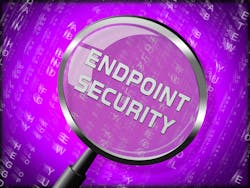5 Best Practices for Managing Endpoints on a Global Scale
Managing hundreds or thousands of endpoints is hard enough when they're all in the same office or campus. But when you have endpoints scattered worldwide – as many global businesses do – you face extra challenges when managing and patching them.
That's why organizations that operate globally must adopt special practices to ensure that they can manage endpoints effectively and do so in ways that ensure a smooth experience for end-users. This article offers tips on how to achieve both goals.
The challenges of endpoint management on a global scale
For businesses whose employees and offices are spread across multiple continents, effective endpoint management can prove especially challenging for several reasons:
- Time zones: End-users are distributed across multiple time zones, making it harder to ensure that IT staff don't disrupt business operations when applying changes to a user's workstation.
- Network performance: There is a risk of network performance issues when sending data across long geographic distances.
- Language barriers: The diverse languages spoken by end-users living in different countries or regions create an additional consideration for IT staff when managing endpoints across a global network.
- Compliance rules: The diversity of compliance rules across different jurisdictions adds another potentially complicating factor in global endpoint management.
On top of these challenges, IT staff face all of the standard difficulties that come with endpoint management in any context, such as the need to support devices that run varying operating systems and to ensure that they provide the right software and support services to each employee or business unit.
Tips for managing endpoints effectively across the world
The following best practices can help global businesses mitigate these challenges.
1. Monitor language packs
Keeping line-of-business applications up to date is a key aspect of endpoint management. But for global organizations, updating apps themselves isn't enough. IT departments must also ensure that they keep language packs up to date.
This is important because language packs ensure that apps are available in the local language of each user group. When patching an application, forgetting to redeploy a language pack might break the language support for a particular user group. These risks disrupt business operations and frustrate employees and make them feel marginalized by the company they work for.
2. Align management operations with time zones
Endpoint management operations, such as installing software updates or making operating system configuration changes, may require system downtime or reboots. For that reason, IT staff will ideally apply changes during non-working hours. For instance, you don't want IT engineers in Europe to disrupt workflows for users based in California by installing a patch when it's after-hours in Europe but in the middle of the workday in the Western U.S.
You also want to avoid making your IT staff work around the clock to accommodate the various time zones of your global offices.
Fortunately, the solution is relatively simple: Using automation and scheduling tools, IT departments can configure endpoint management operations at different times, based on the time zones of the various employees or sites they're supporting. This minimizes the risk of disruption to end-users, regardless of time zone differences or the periods during which IT staff work.
3. Leverage caching
When you're moving data across large geographic distances – as you might if IT staff based on one continent need to install a patch for endpoints on a different one, for instance – management operations will be much faster and more reliable if you take advantage of caching.
Caching means copying data once to a local region and then serving the copied version to multiple endpoints. For instance, if IT staff in Los Angeles need to distribute a patch to an office in Dublin, they could copy the patch to a data center near Dublin and then copy it from there to the Dublin endpoints.
That way, instead of sending hundreds of complete copies of the data between the U.S. and Ireland, they only have to perform a long-term transfer once. As a result, the total time necessary to install the patch on each endpoint is likely lower, since network bandwidth and reliability are generally higher when operating across shorter geographic distances. The risk of failed patch attempts due to broken network connections is also lower.
Ultimately, caching helps ensure end-users get the patches they need faster, with a lower risk of issues for IT teams to troubleshoot.
4. Consider local priorities when installing updates
Sometimes, the urgency for delivering software patches to users in one country or region is higher than elsewhere. For example, suppose state-sponsored cyber attackers are targeting a specific country by attempting to exploit a known vulnerability. In that case, patching the vulnerability in the target country should take precedence over patching it elsewhere.
In scenarios like this, it's important to establish dynamic patch urgency levels that align with localized risks and threats. If you can't install updates across all endpoints on your global network at once – and most global businesses can’t be due to the large scale on which they're operating – you need the capacity to prioritize areas that matter most.
5. Consider local compliance mandates
Similarly, factoring in local or regional compliance rules can be important during endpoint management operations. Privacy laws like the GDPR might require certain disclosures or security protections to be in place when modifying configurations or installing patches, for example.
This is another reason why global organizations need a flexible, dynamic approach to endpoint management that allows them to tailor their operations for different regions and user groups.
The bottom line: Endpoint management should deliver a smooth experience for end-users and IT teams. Although achieving these goals is inherently more challenging for global organizations, it's possible when businesses take steps to address the special requirements of global endpoint management.
About the Author

William Teevan
CEO of Recast Software
Will Teevan is the CEO of Recast Software. William Teevan. He has a long and varied work experience. William began their career in 2001 as a Help Desk Technician at Xavier University. In 2003, they moved on to Omnitech, where they worked as an Account Manager and Field Engineer. In 2006, they joined MPC (formerly MicronPC) as a Corporate Account Executive and Healthcare Account Executive. In 2007, they returned to Now Micro, where they held the roles of Director of Business Development and Account Executive. In 2016, they were promoted to Vice President of Sales and Marketing at Now Micro. In 2022, they joined iamGIS as a Board Member, and in 2019 they were appointed Chief Executive Officer of Recast Software.
William Teevan attended the Army and Navy Academy from 1996 to 1999. William then went on to Xavier University where they earned a Bachelor of Science in Information Technology from 1999 to 2003.
